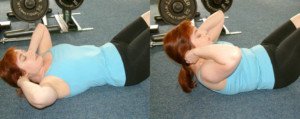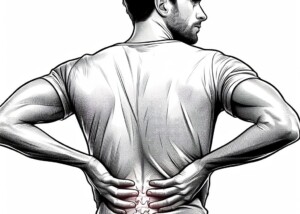
If you want to treat your low back pain, the emphasis should be on weight training rather than on aerobic activity.
Don’t assume that strength training — or doing more of it — will make your back worse. However, there are several things to consider.
As a former personal trainer, I am not surprised that a study shows that lifting weights more frequently is much more effective at treating low back pain, than is the absence of weight workouts.
The University of Alberta study involved 240 women and men with longstanding low back pain. One of the limitations of this study is its small size, but the results can’t be ignored, either.
The investigation demonstrated that the subjects who worked out four times per week had less discomfort than the people who exercised only 2-3 times weekly.
The more-frequent exercisers had 28 percent less pain.
Study Considerations
“There are conflicting studies about this and so many variables that affect pain,” says Melissa Franckowiak, MD, an anesthesiologist in Lockport, NY. Anesthesiologists often treat low back pain with epidural steroid injections, also known as “nerve blocks.”
The patient needs to consider the following:
- Do such studies compare patients with the same cause of low back pain? Dr. Franckowiak points out some differing origins: muscle strain, herniated disc, and facet joint syndrome.
- How the results were followed up from one study to the next is also important to consider. Long-term follow-up shows a more credible outcome than short-term follow-up. The University of Alberta study spanned 16 weeks.
“It seems reasonable to suggest that more active people suffer less back pain, but the type of activity is also important,” says Dr. Franckowiak.
“Running long distances four times per week may cause more pain on joints despite strengthening muscles for endurance by optimizing the cardiovascular system for power, whereas moderate exercise [strength training] four times per week may provide the physical movement needed to provide enough strength to core muscles that prevent back pain, without overdoing it.
“Exercise such as swimming or using a treadmill for walking quickly, or a stationary bike, keeps joints lubricated, gets your target heart rate up, and can challenge muscles enough to strengthen them if the resistance on the machine is varied.
“You can certainly improve low back pain symptoms by performing weight strengthening exercise and without doing a ton of cardio.
“Females tend to tilt their pelvis anteriorly, arching their back and hanging out on their anterior ligaments and allowing for weak abdominal muscles. With this posture, low back pain results from weak abdominal muscles.
“Doing a moderate abdominal workout of small-range crunches, pausing at the peak of the contractions, will help this pain dramatically.

Crunches. Credit: George Stepanek
“It’s not necessary to work the abdominals every day to get full effect. Twice a week is beneficial.
“Also strengthening rhomboid muscles, teres muscles and latissimus dorsi [back muscles] to bring the shoulders into a less slumped posture will help with mid to low back pain.
“Men, especially older men, tend to do the opposite, rotating their pelvis posteriorly so the low back appears flatter when slouching.
“Strengthening the posterior spinal muscles with rowing, pull-downs and gluteal extension exercises are a few things to get started on strengthening.”

Lat Pull-Down
Intuitively, one might conclude that lifting weights is the last thing someone with low back pain should do.
But controlled and methodical training with weights — particularly with machines that are designed to keep the spine neutral — are very beneficial to people with low back pain.









































